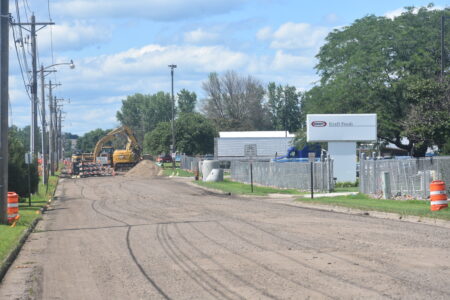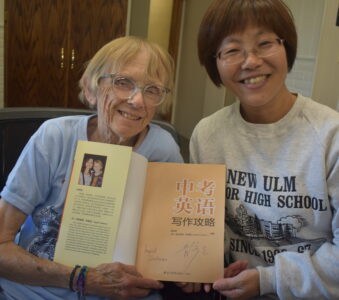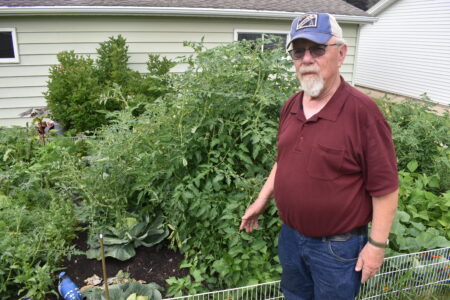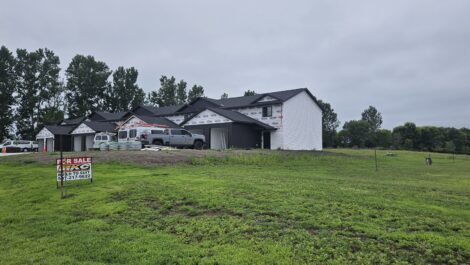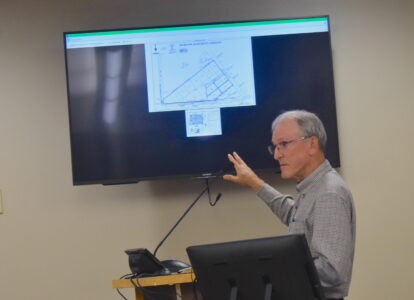NUMC creates new model of care

Dr. Annette Schmitt-Cline provides care to her patient through a virtual visit, which is one of the many care options still available to patients at New Ulm Medical Center.
NEW ULM — In the age of COVID-19, the New Ulm Medical Center (NUMC) has been forced to create a new model of healthcare in a span of two weeks.
NUMC President Toby Freier said the impact of coronavirus was not expected a few weeks ago, but staff has adapted to the changes.
Freier described it as “two years of change happening in two weeks.” Despite these changes, he said the staff has been resilient in near constant change.
The most significant change is NUMC attempts to limit the number of people coming to the medical center. This has led to a perception that NUMC is closed.
“Stay away doesn’t mean stay away from providers,” Freier said.
NUMC is working with new technology to allow virtual medical visits. There are new video conference apps to replace face-to-face appointments. Over the phone appointments are also available. Now approximately 70% to 80% of meetings will need to be done over the phone or video streaming. In some cases, patients could still be asked to visit in person.
In an effort to minimize face-to-face contact, NUMC has created two distinct models of patient care.
The first model is dedicated to taking care of all patients in the region. This includes all types of medical conditions. Other illnesses and medical issues will arise besides COVID-19.
New technology will allow for virtual medical visits. Freier said if there are any questions about the type of appointment necessary, patients can call and ask. Staff can determine how best to schedule an appointment.
Freier said it would be helpful if people registered on the Allina My Account. Even if a person doesn’t need the account now, it could help later. Using the app provides easier communication than calling.
The second part of the model is preparing for a potential surge in coronavirus patients. NUMC is trying to find a method to handle up to four times the amount of patients in the event of an outbreak.
“We’re not set up to do that every day,” Freier said. “So how do we reallocate space?”
The other problem with an influx of COVID-19 patients is the need for protective equipment. In an emergency the hospital will need ventilators and protective equipment like masks.
NUMC has sufficient masks for now, but if an outbreak were to occur in the region, more masks will be needed. Allina medical centers are accepting donations of masks.
Freier said they have time to prepare as no influx of COVID-19 patients has occurred. It might never happen, but it is best to plan for the worst.
“As we try to protect patients and staff, the team has become innovative,” Freier said. One of the new innovations is drive-up anti-coagulation labs. NUMC has patients on anticoagulation medications who visit the clinic frequently. To prevent extra people visiting the medical center, a drive-up lane was created. Lab personnel are able to take blood from patients as they drive-up. This system might be expanded if it proves successful.
One of the difficulties of preventing the spread of COVID-19 is NUMC has needed to restrict patient visits.
“That’s hard for the community,” Freier said. “When you are a patient, you want loved ones with you.”
This directive is in place to protect the community and potential visitors.
Overall community support has been strong. Freier described response as phenomenal. He wants to thank all businesses and nonprofits offering assistance. He said hundreds of masks have been donated by businesses. AMPI offered several boxes of N-95 masks. Pizza Ranch delivered food to staff.Citizens have sent notes of encouragement.
Freier was also thankful for the staff. “We’re blessed by amazing people,” he said. “With things changing every day it can be a challenge for staff but they continue to go above and beyond.”
“They go beyond because they love our patient and love our community,” he said.
Freier also encourages the community to support those who are at higher risk for the disease. He said people with higher risks will need a support system to make social distancing easier. People in the support system could get groceries and supplies for the high risk, to decrease the spread of the virus.
At this time, no positive tests for COVID-19 have been reported in Brown County. The Minnesota Department of Health updates the number of positive tests and the location every day and the numbers for Brown County remain at zero.

